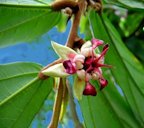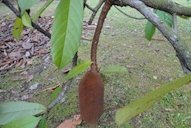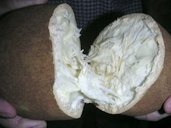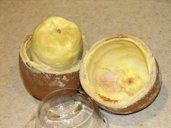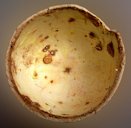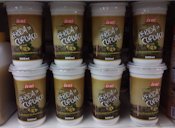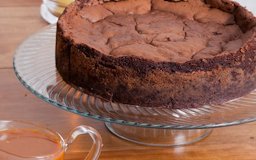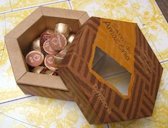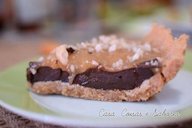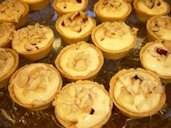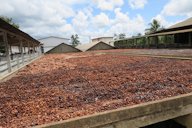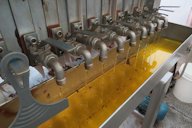| Cupuassu - Theobroma grandiflorum | |||||||||||||||||||||||||||||||||||||
|---|---|---|---|---|---|---|---|---|---|---|---|---|---|---|---|---|---|---|---|---|---|---|---|---|---|---|---|---|---|---|---|---|---|---|---|---|---|
 Fig. 1  Theobroma grandiflorum, source of cupulate chocolate, Amacayacu Park, Colombian Amazon 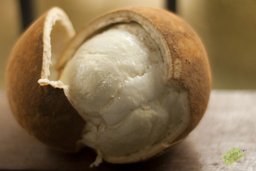 Fig. 2  Cupuaçu (T. grandiflorum) 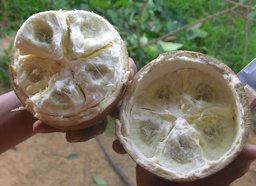 Fig. 3  Delicious cupuaçu 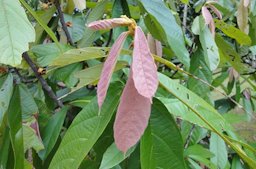 Fig. 4  Cupuaçu T. grandiflorum, new growth appears pale rose 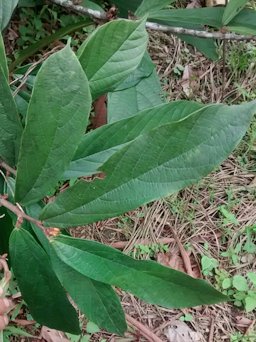 Fig. 5  Cupuaçu T. grandiflorum, Acacías, Meta, Colombia 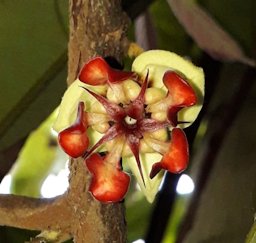 Fig. 6  Cupuaçu T. grandiflorum, Aleixo, Manaus, Brasil 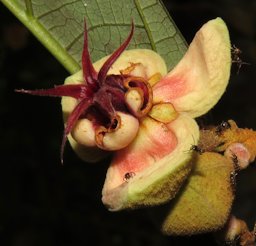 Fig. 7  Cupuaçu, Alta Floresta, State of Mato Grosso, Brazil 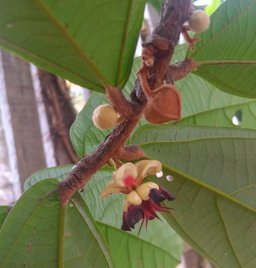 Fig. 10  Cupuaçu T. grandiflorum, Rio Branco, Acre, Brazil 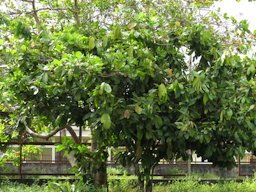 Fig. 17  Cupuaçu T. grandiflorum, Aleixo, Manaus, Brasil 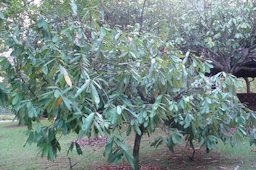 Fig. 18  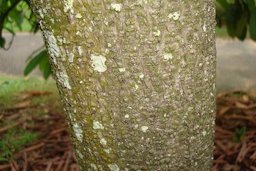 Fig. 19 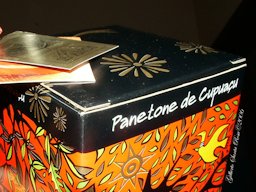 Fig. 20  Natal amazônico, com Panetone de Cupuaçu 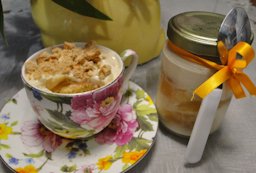 Fig. 21  Pavê de cupuaçu no pote, para presente 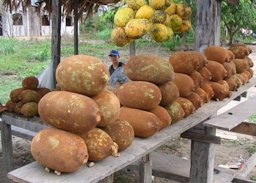 Fig. 30  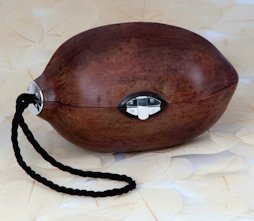 Fig. 31  Bolsa “Cuia de Cupuaçu” |
Scientific
name Theobroma grandiflorum (Wild. ex Spring) Schumann Common names English: Brazilian cocoa, copoasu, cupuassu, large-flowered cocoa; Brazil: copoasu, cupuaçú, cupuaçuzeiro, cupuarana, cupu-assu cupuassu, cupuassú, cupu do mato, copoaçú, pupu, pupuaçú (Portuguese); Colômbia: bacau, kopoazu; Costa Rica: cacau silvestre, pataiste, tete negra; Czech: kakaovník velkokvětý; Portuguese: cupuaçú, cupuassú; Suriname: lupu; Spanish: copoasú, copoasú, copuazú, cupassú, cupuarana, cupuasú 2 Synonyms Bubroma grandiflorum Willd. ex Spreng., Guazuma grandiflora (Willd. ex Spreng.) G. Don, T. macrantha Bernoulli, T. silvestre Spruce ex K. Schum. 2,6 Relatives Cacao, (T. cacao), mocambo (T. bicolor), cupui (T. subincanum), cacayu (T. speciosum), baobab (Adansonia digitata), roselle (H. sabdariffa), monkey cacao (Herrania imbricata) 12 Family Malvaceae (mallow family) Origin South America, Amazonian Brazil 6 USDA hardiness zones 10-12 6 Uses Food; flavoring; substitute for cocoa butter Height 50-65 ft (15-20 m); less than 26 ft (8 m) when cultivated 1 Spread 23 ft (7 m) 1,8 Crown Elongate or pyramidal crown 11 Plant habit Erect; much-branched tree with tricomic branching 1,2 Growth rate Medium rate 6 Longevity 20 + years of productivity 13 Trunk/bark/branches Dark-brown, rough-textured bark 5 Pruning requirement Required for ease of harvest Leaves Evergreen; simple; entire; alternate; coriaceous; young flushes pink-bronze 2 Flowers Bisexual; small, pentamerous; occurring on trunk and main branches 2 Fruit Oblongish, obovate, subglobose to ellipsoidal; large; yellowish-white pulp, soft, aromatic, and acid-sweet 2 Season Spring Light requirement Semi-shade 6 Soil tolerances Mildly acid and neutral soils; prefers rich, sandy clays and loam soils with good drainage 6,8 pH preference 5.0-6.5, tolerating 4.5-8.5 7 Drought tolerance Not tolerant Cold tolerance Hardy to 45-50 °F (7-10 °C) 12 Plant spacing Seedlings 23x23 ft (7x7 m) or 26.3x26.3 ft (8x 8 m); grafted trees 1.8x1.8 ft (6 x 6 m) 2 Roots Tap root (difficult to transplant); superficial secondary roots 1 Invasive potential * None reported Pest/disease resistance Witches' broom is the main disease 2 Known hazard None known Reading Material Cupuacu, Theobroma grandiflorum, Neglected Crops Cupuassu: A New Beverage Crop for Brazil, Advances in New Crops, Purdue University Preliminary Observations on the Cupuassu, Archives RFC Australia Origin Cupuassu originated in south and southeastern Amazonia in Brazil and is also native to the states of Para and Maranhao. Today, it can be found near the Tapajos, Xingu, and Guama rivers, and in northeastern Maranhao (Vasconcelos et al. 1975). 4 The aboriginal inhabitants of the area cultivated this fruit in pre-Columbian times, thus separation of natural occurrence from man’s involvement in dispersal is difficult. At present, it is cultivated in Brazil from São Paulo state in the south to Roraima state in the north; in many cases it is planted as a backyard plant since there are not many commercial-scale plantings. It is also being cultivated on a small scale in Trinidad and Tobago, Ecuador, Guyana, Colombia, Costa Rica, Venezuela, Colombia, Martinique and Ghana. 14 Description A promising new fruit is cupuassu [Theobroma grandiflorum (Willd ex Spreng) Schum, Sterculiaceae], a close relative of cacao (T. cacao L.). Cupuassu fruit contains a highly-flavored pulp that can be used for juices, ice creams, liquors, wine, and jellies. The seeds can be used to make chocolate (Vasconcelos et al. 1975). 4 Theobroma grandiflorum, otherwise known as Cupuassu, grows up to 50 ft (15 m) high. It is evergreen with brown bark, elongated or pyramidal crown, and bole that can be up to 12 in. (30 cm) in diameter. It is common in rainforests in South America. The fruits are oblong, brown, and covered with a thick and hard exocarp. The fruit pulp can be eaten raw to made into juice, jams, and desserts. 6 Leaves/Branches The larger leaves can reach 20 in. (50 cm) long by 5 in. (13 cm) wide, a dark green above with gray-green, prominently-veined undersides. These are attached by short petioles to the branches. New growth flushes appear pale rose, soon maturing and turning green. Leaves in orthotropic branches (vertical orientation) are spirally arranged while those in plagiotropic branches (horizontal) are alternate. 5 Growth pseudo-apical, with lateral branches in 3s; the apical shoot aborting and replaced by development of bud above one of the lateral branches, older branches becoming horizontal or descending. 10 Roots Cupuassu has robust taproot rarely less than 6.5 ft (2 m) deep, particularly when established in uniform permeable soils with a clay-sand structure. Secondary roots are abundant and superficial and are mostly concentrated in the extremities. In adults they reach up to 20 ft (6 m) with abundant lateral roots. 1 Flowers Reddish flowers with thick, triangular sepals are borne singly or in small clusters. 9 The inflorescence is a cyme with 3-5 flowers, 5 dark-purple subtrapezoidal petals, a calyx with 5 triangular sepals, 5 stamens with bilocular anthers, 5 staminodes. Flowers are, surprisingly, hermaphrodite. 1 The inch-plus diameter red and white flowers appear nearly year round, but the plants bear only in spring. The cupuassu is reported to have the largest flowers and fruit in the genus. 5
Fig. 8. Close-up of T. grandiflorum flower, Amazonia cacao-tree Fig. 9. Cupuaçu, T. grandiflorum, Barra do Corda, Brazil Fruit Cupuassu fruit are similar in size and shape to a large mamey sapote (Pouteria sapote (Jacq.) H.E. Morre and Stem). The exterior surface is covered by a rust-coloured, easily-removed short hairs. These are attached to a hard rind whose walls vary from 1¼ to 3/8 inches in thickness. To break open this strong shell requires taking the fruit in one's hand and giving it a quick thump on a hard surface such as concrete. Inside are a mass of seeds, each covered by a soft, white, slippery, fibrous pulp. The easiest way to remove the tenacious flesh from the seeds (in this case there were 33 seeds) is to cut the adhering flesh from the seeds with scissors. The sweet-acid pulp is not normally eaten fresh out of the fruit. Instead it is used to flavour an assortment of ice creams, milk shakes, pastries, etc. 5 It has a velvet brown skin and hangs on long pedicels. The woody pericarp is easily broken to expose the edible seeds, which are round, flat and have a certain similarity with the true cacao kernels, but have more fat having a consistency of cacao butter. 10 Cupuassu seeds, about an inch long by slightly less in width, can be used to make a superior chocolate, has a higher melting point and a lower fraction of saturated fat than chocolate derived from cocoa beans. 5
Fig. 11,12. T. grandiflorum, cupuacu tree, Singapore Fig. 13. Cupuaçu fruit opened. Eine geöffnete Cupuacu Frucht. Fig. 16. The shell of a cupuacu, perfect for using a bowl for your dessert.... of cupuacu!! Varieties In Pará, Brazil, three cultivars of cupuaçu are known: Redondo, with its rounded end, which is the most common; Mamorano, which has a pointed end and produces the biggest fruits; and Mamau, possibly a parthenocarpic mutant. Artificial hybrids between T. grandiflorum and T. obovatum produce fruits with the characteristics of cupuaçu, but which are smaller and less resistant to witches’ broom disease. 2 Harvesting The ripe fruit is harvested when it falls to the ground. 1 Pollination In spite of having hermaphrodite flowers - it is essentially allogamous - the result of having a complex system of genetic self incompatibility which prevents self fertility. 1 Propagation The cupuaçu is generally propagated from seed, but seedless varieties such as Mamau are propagated from cuttings or grafts. As in all species of Theobroma, the seeds are not resistant to desiccation and are sown as soon as they have had the flesh removed and been washed. 3 Sow the seed as soon as it is ripe, in a semi-shaded position in individual containers. Cover with about 15mm of soil. Germination rates of fresh seed is usually high, with sprouting taking place in 20 - 40 days. Young plants are usually ready for planting out 5 - 6 months late. 7 For propagation by cutting, young terminal branches with about five leaves are used, as in cocoa. Propagation by grafting requires stocks obtained from seeds of cupuaçu itself or of other Theobroma species, such as T. obovatum which produces dwarf plants. 3 The plants start bearing four years after plantation. The fruit on maturity turns brownish with yellowish or whitish internal colour. The fruit must be collected off the ground within a day or two of dropping otherwise it starts rotting. Fruits do not ripen if harvested from the trees. The mature fruit can keep for about 10 days. A 4-5 year old tree produces 20 to 30 fruits and a mature tree of over 7 years can yield 60 to 70 fruits. 8 Culture The cupuassu tree can be found throughout the Amazon region as part of spontaneous vegetations on non-inundated areas, particularly near existing or former settlements, in high-rainfall primary forests and along river banks. It can be found at elevations between sea level and 1,000 m. Cupuassu prefers a very humid environment of 77–88% with little temperature variation throughout the year, and mean annual temperatures of between 21.6°C to 27.5°C, and rainfall of between 1,900 and 3,000 mm. Trees need lots of water for good growth. 2 The young plants will need shade during their first year in the field and when adult they can grow under shade or in full sun. 14 Pruning When this tree of the humid tropics becomes too large, it can survive severe pruning, which the closely-related cocoa would not tolerate. 5 Fertilizing The cupuaçu, like cocoa, is a plant which requires nutrients and needs annual fertilization. During the growth stage, 50 g of 12-12-12 NPK + Mg are applied each year; from the fourth year 120 g: and, during production, 500 g of the formula 15-15-13 + Mg, divided into three yearly dressings with 20 additional litres of manure. 2 Diseases The most serious disease of cupuaçu is witches' broom, caused by the fungus Crinipellis perniciosa which is endemic to Amazonia. It affects new branches, flower buds and growing fruit most seriously. The branches attacked swell and put out a great number of shoots similar to a broom, which then wither. The flower buds affected put out "small brooms". The diseased tree does not die but gradually weakens, with a conspicuous reduction in yield. To control the disease, systematic pruning of the diseased branches is recommended at least twice a year. 2 Food Uses The delicious fruit pulp is eaten raw or prepared into a wide variety of beverages, juices, ice-cream, yoghurt, sorbet, preserves, sweets, jams, jellies, puddings and other desserts. The seeds have a high amount of fat and provide a good cocoa butter and can be used to produce chocolate and chocolate-like foodstuffs. Cupuaçu can replace cocoa in many day-to-day foods, especially for children, such as chocolate milk. Cupuaçu seeds can be made into cupulate, which looks and tastes just like chocolate but is cheaper and more resistant to heat. 2 Copoazu is closely related to cocoa; its seeds can be similarly fermented to make chocolate-like products and nut butter. This is because the seed has a high content in digestible fats, in particular oleic acid, which enables its use as a replacement for cocoa butter. When the seed is fermented to produce “chocolate,” it contains about half the antioxidant capacity of cacao chocolate. 13 The pulp is high in pectin (a soluble fibre and gelling agent) and has a low pH value. These characteristics make it a good candidate to replace food additives in pastry. 13
Fig. 22. Bottle of "copoaçu" or "cupuassu" liqueur, made from T. grandiflorum (Amazonian cacao-tree) Fig. 23. Bebida de cupuaçu Ivai, Sao Paulo, Brasil Fig. 24. Torta de chocolate com cupuaçu Fig. 25. Sabores da Amazonia, bonbons de chocolat Fig. 26. Torta de chocolate com doce de cupuaçu Fig. 27. Tortinhas de cupuaçu Nutrient Content Studies of the cupuaçu's dietetic characteristics, with the juices, nectar and preserves industry in mind, show that the fresh juice contains 10.8 percent brix, 21.91 percent amino acids, 23.12 percent vitamin C per mg and 3.0 percent reducing sugars, and that the pH is 3.3. The flesh makes up 40 percent of the fruit and seeds 18 percent. The seeds contain 48 percent sweet-smelling, white butter, which can also be used to make excellent-quality white chocolate. 3 Cupuaçú Chocolate
Cupuaçú Oil Production
Fig. 28. Secagem de sementes de cupuaçu, Projeto Reca, Rondônia Fig. 29. Produção de óleo de cupuaçu, Projeto Reca, Rondônia Medicinal Properties ** Medicinally, the plant is used in the treatment of abdominal pains, angina, high blood pressure, chapped skin and burns, and bruises. 6 The pulp has a hydrating effect on the skin, and pulp and seed fat are used in the manufacture of body lotions and skin-care products. The pulp is very rich in antioxidants, including polyphenols and flavonoids. 9
Fig. 32. Natura Ekos sabonetes em barra puro vegetal Other Uses Cupuassu seeds, about an inch long by slightly less in width, can be used to make a superior chocolate. The product, referred to as cupulate, has a higher melting point and a lower fraction of saturated fat than chocolate derived from cocoa beans. 5 Seeds of this species are used as chocolate substitute. It is rich in oil and a great source of cocoa butter. It can also be used in cosmetics and pharmaceuticals. 6 The wood is of medium texture, straight-grained, moderately heavy and with moderate natural durability. It is very little used, but is suitable for cabinet making and internal cladding of buildings. 7 List of Growers and Vendors |
||||||||||||||||||||||||||||||||||||
| Bibliography 1 Izquierdo, J., et al. "Theobroma grandiflorum." Ecoport, Food and Agriculture Organization of the United Nations, I.D. 10394, 9 June 2001, FAO, ecoport.org/ep?Plant=10394. Accessed 28 Mar. 2022. 2 Lim T. K. "Edible Medicinal And Non-Medicinal Plants: Volume 3, Fruits." EPDF, 2012, epdf.pub/volume-3-fruits.html. Accessed 26 Mar. 2022. 3 Giacometti, D. C. "Cupuacu, Theobroma grandiflorum." Neglected Crops 1492 from a Different Perspective, FAO Plant Production and Protection Series No. 26, pp. 205-209, Food And Agriculture Organization of the United Nations, Edited by J. E. Hernandez Bermejo and J. Leon, 1994, FAO, www.fao.org/docrep/018/t0646e/t0646e.pdf. Accessed 25 Mar. 2022. 4 Cabral Velho, Christiane, et al. "Cupuassu: A New Beverage Crop for Brazil." Advances in new crops, Edited by J. Janick and J. E. Simon, pp. 372-375, 1990, NewCROP ™, hort.purdue.edu/newcrop/proceedings1990/V1-372.html. Accessed 25 Mar. 2022. 5 Whitman, Wm. F. "Preliminary Observations on the Cupuassu." Archives of the Rare Fruit Council of Australia, May 1996, rfcarchives.org.au/Next/Fruits/Cacao/Cupuassu5-96.htm. Accessed 26 Mar. 2022. 6 Fern, Ken. "Theobroma grandiflorum, (Willd. ex Spreng.) K.Schum." Plants For A Future, (CC BY-NC-SA 4.0), pfaf.org/user/Plant.aspx?LatinName=Theobroma+grandiflorum. Accessed 26 Mar. 2022. 7 Lorenzi, Harri. Brazilian Trees, A Guide to the Identification and Cultivation of Brazilian Native Trees. Vol. 1. 4th ed., Nova Odessa, Instituto Plantarum de Estudos da Flora, 2002. 8 Pareek, Om Prakash, and Suneel Sharma. "Underutilized Fruits and Nuts Vol.2: Fruits of tropical region." EPDF, epdf.pub/underutilized-fruits-and-nuts-vol2-fruits-of-tropical-region.html. Accessed 26 Mar. 2022. 9 Blancke, Rolf. "Tropical Fruits and Other Edible Plants of the World: An Illustrated Guide." Zlibrary, 2016, b-ok.cc/book/3414166/f1bf9d?dsource=recommend. Accessed 26 Mar. 2022. 10 "Food and Fruit bearing forest spedies: Examples from Latin America." FAO Forestry paper 44/3, Food And Agriculture Organization of the United Nations, 1986, FAO, www.fao.org/3/ap368e/ap368e00.pdf. Accessed 31 Mar. 2022. 11 Lorenzi, Harri. Brazilian Trees, A Guide to the Identification and Cultivation of Brazilian Native Trees. Vol. 2. 2nd ed., Nova Odessa, Instituto Plantarum de Estudos da Flora, 2002.s 12 "Cupuaçu, Theobroma grandiflorum." Trade Winds Fruit, www.tradewindsfruit.com/content/cupuassu.htm. Accessed 28 Mar. 2022. 13 "Theobroma grandiflorum, Copoazu." CGIAR, Forests, Trees and Agroforestry, www.foreststreesagroforestry.org. Accessed 29 Mar. 2022. 14 Duarte, Odilo and Robert E. Paull. Exotic Fruits and Nuts of the New World. Cambridge, CABI, 2015. Video v1 "Brazil Strange Cocoa Fruit - Cupuacu Fruit Harvesting - Cupuacu Bean Processing." Fazenda Bom Sossego, Noal Farm, (CC0), www.youtube.com/watch?v=n-P4wr6AwLc. Accessed 31 Mar. 2022. Photographs Fig. 1 Culbert, Dick. "Theobroma grandiflorum, source of Cupulate Chocolate, Amacayacu Park, Colombian Amazon." Wikimedia Commons, 6 Feb. 2007, (CC BY 2.0), Image cropped, commons.wikimedia.org/wiki/File:Theobroma_grandiflorum,_source_of_Cupulate_Chocolate_(9906147393).jpg?uselang=fr. Accessed 28 Mar. 2022. Fig. 2 Solar, Ricardo. "Cupuaçu (Theobroma grandiflorum)." Flickr, 14 Mar. 2011, (CC BY-NC-SA 2.0), www.flickr.com/photos/11027292@N03/5527169448. Accessed 31 Mar 2022. Fig. 3 Moreno, Paulo. "Delicious Cupuaçu." Flickr, 22 Nov. 2004, (CC BY-NC-SA 2.0), www.flickr.com/photos/paulo/54269195/. Accessed 29 Mar. 2022. Fig. 4,11,12,18,19 Kwan. "Theobroma grandiflorum, (Cupuacu Tree)." The Plant Observatory, 12 May 2010, natureloveyou.sg/Theobroma%20grandiflorum/Main.html. Accessed 29 Mar. 2022. Fig. 5 Cárdenas, Leyla. "Cupuaçu, Theobroma grandiflorum, Acacías, Meta, Colombia." iNaturalist, Research Grade, 7 June 2019, (CC BY-NC 4.0), Image cropped, www.inaturalist.org/observations/26585267. Accessed 28 Mar. 2022. 6 Xavier, Renata. "Cupuaçu, Theobroma grandiflorum, Aleixo, Manaus, Brasil." iNaturalist, Research Grade, 3 May 2019, (CC BY-NC 4.0), www.inaturalist.org/observations/24463699. Accessed 28 Mar. 2022. Fig. 7 Hoyer, Rich. "Cupuaçu, Theobroma grandiflorum, Alta Floresta, State of Mato Grosso, Brazil." iNaturalist, Research Grade, 28 July 2018, (CC BY-NC 4.0), www.inaturalist.org/observations/14842756. Accessed 28 Mar. 2022. Fig. 8 Puime. "Close-up of Theobroma grandiflorum flower, Amazonia cacao-tree." Wikimedia Commons, c. 2006, Public Domain, commons.wikimedia.org/wiki/File:Theobroma_grandiflorum-flower.jpg. Accessed 28 Mar. 2022. Fig. 9 Leal Silva, Antonio. "Cupuaçu, Theobroma grandiflorum, Barra do Corda, Brazil." iNaturalist, Research Grade, 20 Sept. 2021, (CC BY-NC 4.0), www.inaturalist.org/observations/95622808. Accessed 28 Mar. 2022. Fig. 10 Neves, Patricia. "Cupuaçu, Theobroma grandiflorum, Rio Branco, Acre, Brazil." iNaturalist, Research Grade, 24 Sept. 2020, (CC BY-NC 4.0), Image cropped, www.inaturalist.org/observations/60586144. Accessed 28 Mar. 2022. Fig. 13 BjoernS. "Cupuaçu fruit opened. Eine geöffnete Cupuacu Frucht." Wikimedia Commons, 16 Jan. 2004, (CC BY-SA 2.0 DE), commons.wikimedia.org/wiki/File:Cupuacu_fruit_opened.jpg. Accessed 28 Mar. 2022. Fig. 14 Hind, Christopher. "Cupuassu." Wikimedia Commons, via English Wikipedia, 11 Aug. 2007, (CC BY-SA 3.0), (GFDL), commons.wikimedia.org/wiki/File:Cupuassu.jpg. Accessed 29 Mar. 2022. Fig. 15 cupuacu-fruit. "cupuacu-butter." Flickr, 19 June 2010, (CC BY-NC 2.0), www.flickr.com/photos/cupuacufruit/4715444715/in/album-72157624312958990/. Accessed 29 Mar. 2022. Fig. 16 cupuacu-fruit. "The shell of a cupuacu perfect for using a bowl for your dessert.... of cupuacu!!" Flickr, 10 Aug. 2010, (CC BY-NC 2.0), www.flickr.com/photos/cupuacufruit/4879170696/. Accessed 29 Mar. 2022. Fig. 17 Xavier, Renata. "Cupuaçu, Theobroma grandiflorum, Aleixo, Manaus, Brasil." iNaturalist, Research Grade, 20 Sept. 2020, (CC BY-NC 4.0), www.inaturalist.org/observations/60827193. Accessed 28 Mar. 2022. Fig. 20 SantaRosa OLD SKOOL. "Sabores da Amazonia, Bonbons de Chocolat, Produtos do Norte." Flickr, 22 Aug. 2005, (CC BY 2.0), www.flickr.com/photos/93087247@N00/36508514. Accessed 31 Mar 2022. Fig. 21 Laély. "Pavê de cupuaçu no pote, para presente." Flickr, 16 June 2012, (CC BY-NC-SA 2.0), www.flickr.com/photos/41425745@N05/7382218478. Accessed 1 Apr. 2022. Fig. 22 Puime. "Bottle of "copoaçu" or "cupuassu" liqueur, made from Theobroma grandiflorum (Amazonian cacao-tree)." Wikimedia Commons, 30 July 2008, Public Domain, commons.wikimedia.org/wiki/File:Theobroma_grandiflorum-liqueur.jpg?uselang=fr. Accessed 28 Mar. 2022. Fig. 23 Kaneko, Monica. "Bebida de cupuaçu Ivai, Sao Paulo, Brasil." Flickr, 6 Nov.2010, (CC BY-SA 2.0), Image cropped, www.flickr.com/photos/11155422@N00/5167867629. Accessed 31 Mar 2022. Fig. 24 Karen. "Torta de chocolate com cupuaçu." Almanaque Culinario, 1 May 2012, (CC BY-NC 3.0 BR), www.almanaqueculinario.com.br/receita/torta-de-chocolate-com-cupuau-27678. Accessed 31 Mar 2022. Fig. 25 SantaRosa OLD SKOOL. "Natal amazônico, com Panetone de Cupuaçu." Flickr, 24 Dec. 2006, (CC BY 2.0), www.flickr.com/photos/93087247@N00/332954527. Accessed 31 Mar. 2022. Fig. 26 Nascimento, Adriana. "Torta de chocolate com doce de cupuaçu." Casa, Coisas e Sabores, 17 Dec. 2012, (CC BY-NC-SA 3.0), www.casacoisasesabores.com.br/2012/12/semana-de-natal-torta-de-chocolate-com.html. Accessed 31 Mar 2022. Fig. 27 Renata. "Tortinhas de cupuaçu." Almanaque Culinario, 3 May 2011, (CC BY-NC 3.0 BR), www.almanaqueculinario.com.br/receita/tortinhas-de-cupuacu-24435. Accessed 31 Mar 2022. Fig. 28 Rose, Alexander. "Secagem de sementes de cupuaçu, Projeto Reca, Rondônia." Flickr, 3 Apr. 2019, (CC BY-NC 2.0), www.flickr.com/photos/paulo/54269195/. Accessed 29 Mar. 2022. Fig. 29 Rose, Alexander. "Produção de óleo de cupuaçu, Projeto Reca, Rondônia." Flickr, 3 Apr. 2019, (CC BY-NC 2.0), www.flickr.com/photos/sociobioamazonia/47564647371/in/photostream/. Accessed 29 Mar. 2022. Fig. 30 cupuacu-fruit. "cupuacu-butter." Flickr, 11 Jan. 2005, (CC BY-NC 2.0), www.flickr.com/photos/cupuacufruit/4879170644/in/album-72157624312958990/. Accessed 29 Mar. 2022. Fig. 31 Ramid, João. "Bolsa “Cuia de Cupuaçu”, criada por Argemiro Münoz e Izaías Lopes, com produção da empresa Joiartmiro e ourivesaria de Argemiro." Espaço São José Liberto" Flickr, 6 Jan. 2014, (CC BY 2.0), www.flickr.com/photos/100619140@N07/11802550944. Accessed 29 Mar. 2022. Fig. 32 Boldi, Cristina. "Natura Ekos Sabonetes em barra Puro Vegetal." Cuidados e Vaidades, (CC BY-NC-ND 2.5 BR), www.cuidadosevaidades.com.br/2014/12/natura-ekos-sabonetes-em-barra-puro.html?showComment=1418455716973. Accessed 1 Apr. 2022. * UF/IFAS Assessment of Non-native Plants in Florida's Natural Areas ** Information provided is not intended to be used as a guide for treatment of medical conditions. Published 7 Apr. 2022 LR |
|||||||||||||||||||||||||||||||||||||
